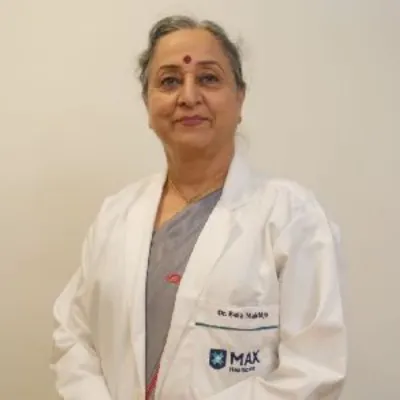Best Cardiologists in Artemis Hospital Gurgaon
 10 December,2025
Read More
10 December,2025
Read More
Starting From: USD 1100-1300
Procedure Type: Surgical Procedure
Hospitalization Days: 1-4 Days
Procedure Duration: 1-3 Hrs
Recovery Time: 2-6 Weeks
Success Rate: 95%
Uterine fibroid removal in India is cost-effective, starting at INR 50,000 (approximately USD 600). The average fibroids removal cost in India ranges from INR 90,000 to 110,000 (USD 1,100–1,300), depending on procedure type, hospital, and location. Key factors affecting fibroids removal cost in India include surgical approach, doctor expertise, and patient condition. Exploring the uterine fibroids removal package cost in India and treatment options in tier-II cities can offer quality care at lower rates.
Below is the city-wise distribution of uterine fibroids removal cost in India:
|
City |
Average Cost (INR) |
Average Cost (USD) |
|
Delhi |
INR 80,000 – INR 1,50,000 |
USD 970 – USD 1,800 |
|
Mumbai |
INR 85,000 – INR 1,60,000 |
USD 1,030 – USD 1,900 |
|
Bangalore |
INR 75,000 – INR 1,40,000 |
USD 910 – USD 1,660 |
|
Chennai |
INR 70,000 – INR 1,30,000 |
USD 850 – USD 1,550 |
|
Hyderabad |
INR 65,000 – INR 1,20,000 |
USD 790 – USD 1,450 |
|
Kolkata |
INR 60,000 – INR 1,15,000 |
USD 730 – USD 1,390 |
|
Pune |
INR 70,000 – INR 1,20,000 |
USD 850 – USD 1,450 |
|
Ahmedabad |
INR 65,000 – INR 1,10,000 |
USD 790 – USD 1,330 |
Uterine fibroids are non-cancerous growths that develop in or around the uterus, also known as the womb. These growths, medically referred to as leiomyomas or myomas, are composed of muscle and fibrous tissue and can vary considerably in size. Some women may have just one fibroid, while others may develop multiple fibroids of various sizes, ranging from tiny, seed-like formations to large masses that can enlarge the uterus.
While the exact cause of uterine fibroids is not fully understood, factors such as hormonal changes, genetics, and lifestyle may influence their development. Many women with fibroids do not experience symptoms, but some may notice heavy menstrual bleeding, pelvic pain or pressure, frequent urination, or fertility issues.
Diagnosis typically involves pelvic examinations and imaging tests, such as ultrasound or MRI. Although uterine fibroids are benign, they can negatively impact a woman’s quality of life, making timely diagnosis and treatment necessary. It is therefore essential to know the uterine fibroids removal cost in India.
Uterine fibroid removal is recommended for women who:
|
Cost Category |
INR (Indian Rupees) |
USD (Approximate) |
|
Minimum Cost |
INR 50,000 |
USD 1,100 |
|
Average Cost |
INR 90,000 |
USD 1,100 |
|
Maximum Cost |
INR 200,000 |
USD 1,300 |
(Note: Uterine fibroids removal cost in India varies widely based on hospital, city, patient condition, and chosen procedure.)
|
Country |
Approx. Cost (USD) |
|
India |
USD 1,100 – USD 1,300 |
|
USA |
USD 7,000 – USD 12,000 |
|
UK |
USD 5,500 – USD 10,000 |
|
Singapore |
USD 6,000 – USD 10,000 |
|
Australia |
USD 6,500 – USD 11,000 |
|
Thailand |
USD 2,500 – USD 5,000 |
|
UAE |
USD 4,000 – USD 8,000 |
India remains one of the most popular destinations for affordable fibroids removal. India's high-quality uterine fibroid removal makes it a preferred medical tourism hub.
Most health insurance policies in India cover the uterine fibroids removal cost in India if medically indicated. However, coverage may vary:
Always clarify inclusions, exclusions, and claim procedures before admission.
Here are a few valuable tips to reduce your uterine fibroids removal cost in India:
Choosing MediJourney for your uterine fibroid removal in India ensures access to top-tier medical care with full transparency and dedicated patient support. With pre-negotiated rates, patients avoid hidden charges while benefiting from some of the best hospitals and surgeons. MediJourney also offers multilingual support and complete assistance with travel, accommodation, and visa needs. For those concerned about the uterine fibroids removal cost in India, MediJourney helps patients understand the average fibroids removal cost in India and explore affordable fibroids removal in India through trusted hospitals. Its tailored care approach considers all factors affecting fibroids removal cost in India, ensuring each case is handled with precision. With 24/7 customer service and support in navigating the uterine fibroids removal package costs in India, MediJourney makes the uterine fibroids treatment costs in India more manageable, providing peace of mind from consultation to recovery.
Answer: The average cost of uterine fibroids removal in India ranges from INR 90,000 - 1,10,000 (approximately USD 1,100 - 1,300), although total expenses may vary based on the type of procedure, hospital, and city.
Answer: The cost of uterine fibroid embolization (UFE) in India typically ranges from INR 80,000 - INR 1,50,000 (USD 1,000 - 1,800). The final price depends on the hospital’s facilities, the city, and the complexity of the case.
Answer: Uterine fibroids removal in India is much more affordable than in many Western countries. In India, the cost typically ranges from USD 600 to USD 2,400, whereas the same procedure in the United States can cost between USD 7,000 and USD 12,000, and in the UK, it can range from USD 5,500 to USD 10,000. This significant cost difference, combined with high-quality care, makes India a popular destination for medical tourism.
Answer: Follow-up appointments in India typically cost between INR 1,000 and 3,000 (USD 12 - 36) per visit. Additional expenses may include medications, imaging tests, or further consultations if complications arise, which can add INR 2,000 to 8,000 (approximately USD 25 to USD 100) to the overall post-treatment cost.

Senior Director
Gynecologist and Obstetrician, IVF Specialist
Max Super Speciality Hospital, Shalimar Bagh, New Delhi

Senior Director
Gynecologist and Obstetrician, IVF Specialist
Max Smart Super Speciality Hospital, Saket, New Delhi

Senior Director
Gynecologist and Obstetrician
Max Smart Super Speciality Hospital, Saket, New Delhi

Senior Director
Gynecologist and Obstetrician
Max Smart Super Speciality Hospital, Saket, New Delhi

Senior Director
Gynecologist and Obstetrician
Max Smart Super Speciality Hospital, Saket, New Delhi

Senior Consultant
Gynecologist and Obstetrician, Laparoscopic Surgeon
Madhukar Rainbow Children Hospital, Malviya Nagar, New Delhi
Dr. Meenakshi Banerjee is a Gynaecologist & Obstetrician with 21+ years of experience. Her expertise is in treating complicated ovarian cysts laparoscopically & by minimally invasive ureteroscopic techniques of Hysteroscopy and Colonoscopy. ...
Dr. Renu Raina Sehgal is an experienced Obstetrician and Gynecologist with 22 years of practice. She specializes in Gynaecological Endoscopy, Infertility, Menopause, Advanced Gynaecological Laparoscopy, etc. ...
The Art of Effective Communication
 10 December,2025
Read More
10 December,2025
Read More
 09 December,2025
Read More
09 December,2025
Read More
 05 December,2025
Read More
05 December,2025
Read More
 04 December,2025
Read More
04 December,2025
Read More
 27 November,2025
Read More
27 November,2025
Read More
 25 November,2025
Read More
25 November,2025
Read More